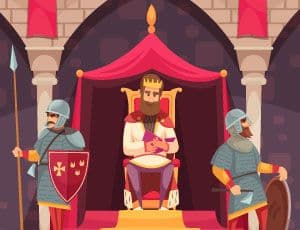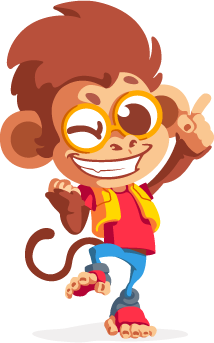Escola Games | Jogos Educativos
https://www.escolagames.com.br
Teacher's support sheet

The king's Castle
A medieval adventure awaits!
Come have fun in the King's Castle and its mysterious and adventurous stories. Read the poems and assemble the best medieval puzzles!

Tips for the Educator
A challenging game that works on essential skills for the development of students' logical reasoning. In addition to exercising visual memory, assembling puzzles helps in developing problem-solving abilities. This skill will be crucial in subjects like mathematics, for example. The earlier the brain is stimulated to find solutions, the easier it will be to solve problems.
The game contains nine scenarios that offer the option of the most difficult level with a bold proposal for children to "rack their brains," literally! [FIM-DICA]
Objectives for the Student
Develop attention, concentration, and logical reasoning. Build self-confidence in problem-solving. Analyze figures and expand notions of composition and decomposition through the fragmentation of an image. Perceive different positions of fragmented figures in an image. Highlight discrimination and visual perception through the analysis of puzzle pieces and their positions. Foster the development of various thinking skills, such as observation, comparison, analysis, and the ability to synthesize. Promote the study of other cultures. Develop respect for the culture of other peoples. Learn about medieval characters and stories.
Objectives for the Teacher
Offer the game as a didactic resource to reinforce the content covered in the classroom. Expand students' knowledge. Work with students on motor skills, concentration, and logical reasoning. Introduce students to different cultures. Familiarize students with mythology. Enable observation of how society was organized in ancient times.
Teacher's Approach Suggestions
METHODOLOGY FOR GAME USE
Start the activity by suggesting that students begin with the easy level, i.e., with the fewest number of pieces. Let the student choose the scenario to feel more motivated to play. Gradually increase the difficulty level by increasing the number of pieces. Repeat the process with all the game scenarios.
In each scenario, there is a story; ask the student to read it aloud if they are already literate or in the literacy process. This activity allows students to imagine what is being told, developing their creativity and imagination. At the end of the game, you can ask students to draw about the King's stories or, depending on the student's stage, they can construct their own essay.
Another suggestion is to propose that students create a play on the game's theme or on a subject being developed in the classroom. Allow students to participate in script creation, costume choices, set design, etc.
WORKING WITH MYTHS AND HEROES
Start the class by asking about which Greek myths and heroes the class knows and if they have read or heard any narratives. Let them present their ideas first, help them organize their knowledge.
Hold a reading circle with students presenting legends, myths, and curiosities about Greek heroes. The stories of these heroes can be divided into several lessons, reading two or three heroes at a time. At the end of these stories, ask students to draw and write a short text about their favorite heroes studied in the past weeks.
You can also request that students create a play reconstructing the stories told during the lessons.
USE OF PHOTOGRAPHS
You can ask students to bring photos of their parents, grandparents, and other more distant relatives to class. Ask that along with older photos, current photos be brought as well. This activity aims to show students through photographs how things change over time, such as culture, clothing, environment, among others.
Create a bulletin board with craft paper, then place the old photos of all students on one side and the current photos on the other. Ask students to make comparisons, pointing out similarities and differences. Be a mediator in this activity. Allow students to make their own associations.
Supplementing the Content
THE ORIGIN OF THE PUZZLE
The origin of the puzzle is a curiosity that can be worked on in the classroom through internet research or storytelling.
The origin of the puzzle is still uncertain, but there are indications that it is very ancient. In ancient China, there was already a toy called Tangram, a millennia-old object consisting of seven large pieces that together formed various different designs. Although not exactly like the puzzles we know today, its purpose was to assemble and fit pieces. In the 18th century, geography students glued maps onto small wooden pieces that were later cut and used for fitting. This served for students to understand the geographic organization of the planet. From then on, people began making puzzles with all kinds of engravings and paintings, and the goal was no longer just to educate but to entertain. In the early 19th century, the puzzle was already one of the favorite toys of European children. With the Industrial Revolution, this type of object began to be manufactured on a large scale, greatly contributing to its popularization.
